Tales From Earthsea
August 12, 2010
For years the work of Studio Ghibli and Hayao Miyazaki has been renowned the world over. With a simple philosophy of good storytelling and engaging hand-drawn anime encompassing various artistic palettes and techniques, Miyazaki set the bar high for a standard of excellence - a bar that he always met and often surpassed. We now have the pleasure of welcoming a new Miyazaki to the fold, Hayao's son Goro who, with his debut feature, TALES FROM EARTHSEA proves that the apple doesn't fall from the tree as, in some respects, Goro surpasses his father's talents, bringing a new level of visual mastery to the table.
TALES FROM EARTHSEA is based on the fantasy book series by Ursula Le Guin. A collection of short stories, the six book series tells the story of the mystical world of EARTHSEA where magic, wizardry and enchantment are sciences that are used by Mages (magicians) to keep the world and the elements in balance. If any one thing is not kept in check and that harmony between nature and man and man within himself is upset, terrible things can happen. But in the archipelago of EARTHSEA, that harmony and magic revolves around language, knowledge and the "true" name of everything. To know and use a "true name" wields power of the domain and using a "true name" mixed with magic is what will disturb the world's balance.
Sparrowhawk is more than a man of mystery. He is the Archmage. As a young shepherd known as Ged, he was chosen to learn the magicks of EARTHSEA. Through the years we have followed his journey to this level of enlightenment and power but now there is a great sorrow and sadness that fills him. The world is dying. Where there was once vital and vibrant life, there is despair and emptiness. Dragons, who have long avoided humans, are now not only appearing, but fighting great battles to the death. The seas are not calm. The crops are not growing. Balance is gone. Why?
Arren is young prince from Enlad. Fleeing his home after committing a heinous crime, he is pursued by a dark shadow that seems to appear from nowhere, filling him with rage and anger. Lost and alone, he encounters Sparrowhawk who senses something special in the boy. Sparrowhawk also takes their meeting as a serendipitous sign for what is to come in the future.
Travelling together, they set out for the capital city of Hort Town. What they find along the way and in the town dismays Sparrowhawk. People are being taken into slavery. Drugs are being handed out like candy on the street designed to "make you forget pain." Arren, believing his own pain to be unbearable almost succumbs to the allure of these empty promises of emotional freedom only to be stopped by Sparrowhawk. Sitting high above Hort Town deep in thought, both Sparrowhawk and Arren are given new perspective and insight on what is happening around them. For Sparrowhawk, there is only one force that could upset the balance and harmony to this extent - the Evil Lord Cob.
Left alone while Sparrowhawk tries to investigate the unharmonious imbalances further, it doesn't take long for Arren to find himself captured by the slave trader, Hare. It also doesnft take long for Sparrowhawk to come in search of his young charge.
Seeking refuge in the house of his old friend, Tenar, Sparrowhawk steels himself for what he knows will be the ultimate battle with Cob. But what even he doesn't know is what power lies within Arren and a young girl named Therru, herself shepherded by Tenar.
Miyazakifs storied montage of various aspects of several of Le Guin's EARTHSEA series is spellbinding and beautiful. Drawing largely from "The Farthest Shore for the basic storyline between Arren and Sparrowhawk, Miyazaki then looks to "The Wizard of EARTHSEA" and "Like The Tombs of Atuan" for the darker elements of the film, including Lord Cob. As if soaring high above the entire EARTHSEA archipelago, we are treated to a dreamlike overview of all that is EARTHSEA.
The story itself is one that is timeless and topical, celebrating the elements of nature and its fragility as well as mankind's opportunistic and destructive impact on both nature and man alike. Although the pace seems exceedingly slow at establishing all the elements necessary to secure the purpose and intent of the story, the end result is magical. Knowing that there will be children and teens drawn to this mystical tale, notable is even the nod to drug use as a means to forget which sends its own message to young viewers - drugs are bad. life is good. The emotional complexities of Arren equate as a unique coming of age story, creating a character that pre-teens and teens will find a commonality, while Sparrowhawk speaks to the uncertainty in each of us as guardians of this world in which we live. Even more powerful, however, is the message that there is good in each of us, no matter what your circumstance or past; itfs up to you to find your own power and create your own balance within yourself and the world.
For the English-speaking version of TALES FROM EARTHSEA, Miyazaki has done himself proud, starting with Timothy Dalton's Sparrowhawk and Willem Dafoe's Lord Cob. Dalton brings such a calm - an Obi Wan Kenobi calm - to the story with his young apprentice. On the other hand, Dafoe is simply spectacular. His entire vocal tenor of low, soft, deliberate speaking is creepy in and of itself letting one know Cob is evil and not to be trusted, but where he really shines is with Lord Cob's transformation from young and beautiful to bitter and old. His voice effectively sets a very frightening tone. And then there's Cheech Marin as slave trader Hare - HYSTERICAL!! Great comic evil. Mariska Hargitay also lends her talents and while not as prominent and scene setting as those of Dalton and Dafoe, bodes well as the mild mannered Tenar.
But the real reason to see TALES FROM EARTHSEA is the animation. Absolutely exquisite and particularly when it comes to the backgrounds. With beauteous blends of the styles and colors of Monet and Van Gogh, in particular, the background imagery alone just sweeps you away into the beauty of nature, another time, another place. Hand drawn mirror reflective floors and a sparkling wall mosaic that are so detailed you can see each minute tile square are exquisitely breathtaking. On watching the film, I was swept away into images of ancient Rome and Babylon, the lush green meadows reminiscent of Ireland or Scotland, and even Alexandria and the hidden city under the sea of which you see faint images of in several of the scenes with a cliff top point of view. It's easy to see the influence of Goro's studies in landscaping and architecture given that so much attention is paid to those aspects of the animation.

What I appreciate and admire in terms of animation affecting the story, are the visual differentials between the background and foreground. The most exquisite elements of the film are the backgrounds and by the amount of detail shown, clearly demonstrates their importance to the story. Characters are not as intricately drawn which forces your eye to the background and the thematic elements of nature which in turn support the message of the film - the delicate balance of the world and ourselves and how it can all disappear if care is not paid.
Topping it all off is a sumptuous score by Tamiya Terashima that simply swells with emotion at every turn.
Although there is room for improvement from a storytelling standpoint, it is indisputable that Goro is heir to the title of Archmage of animation.
Sparrowhawk - Timothy Dalton
Lord Cob - Willem Dafoe
Hare - Cheech Marin
Directed by Goro Miyazaki. Written by Miyazaki and Keiko Niwa based on the novels by Ursula Le Guin

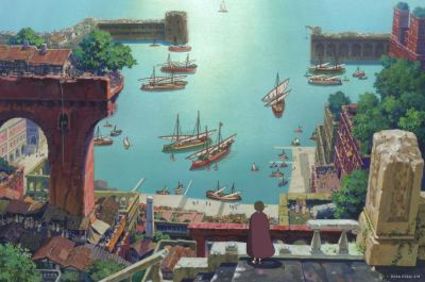
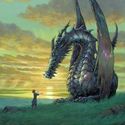
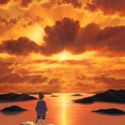
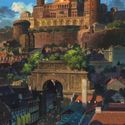

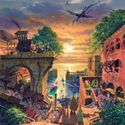


















Reader Comments(0)